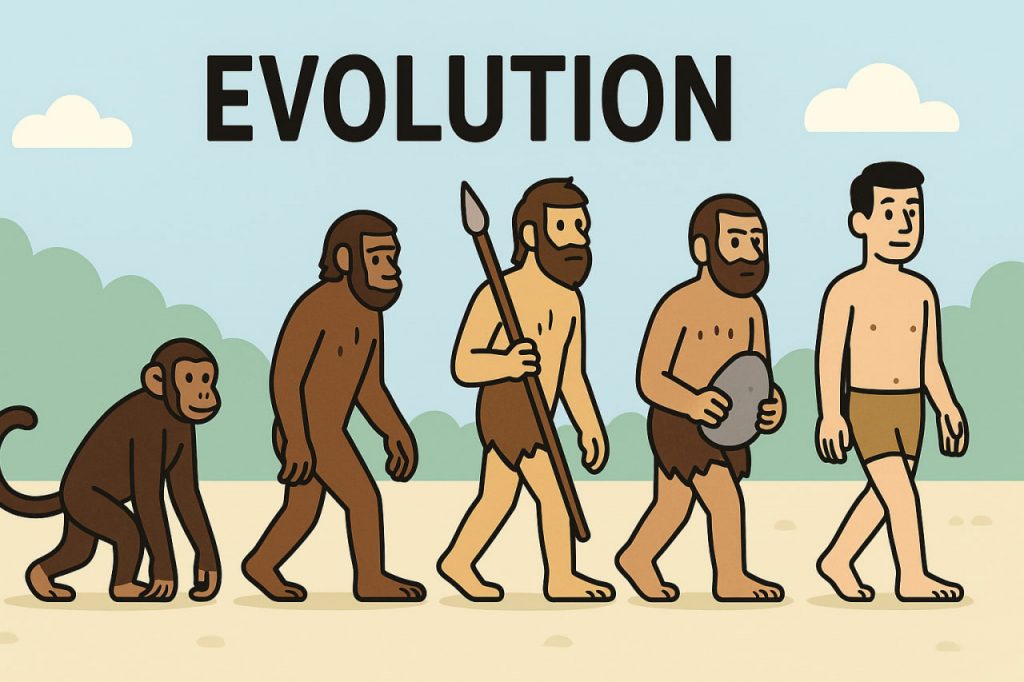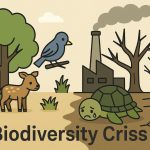Evolution is the process by which living organisms change and diversify over time. It explains how simple life forms that appeared billions of years ago gradually developed into the complex plants, animals, and humans we see today. Evolution occurs through mechanisms such as natural selection, mutation, gene flow, and genetic drift, which shape the traits of species across generations.
Early Theories of Evolution
Before modern science, many cultures proposed ideas about the origin of life. In the 18th and early 19th centuries, scientists like Jean-Baptiste Lamarck suggested that organisms adapt by passing on traits acquired during their lifetimes. However, it was Charles Darwin, with his book On the Origin of Species (1859), who provided the first scientific explanation based on natural selection, revolutionizing biology.
Mechanisms of Evolution
Several processes drive evolutionary change:
- Natural selection – individuals with advantageous traits survive and reproduce more successfully.
- Mutation – random changes in DNA that create genetic diversity.
- Gene flow – movement of genes between populations.
- Genetic drift – random changes in gene frequency, especially in small populations.
Together, these mechanisms explain both gradual adaptation and rapid shifts in species.
Evidence for Evolution
Evidence supporting evolution comes from multiple scientific fields. The fossil record shows a timeline of gradual changes in species over millions of years. Comparative anatomy reveals similarities between different organisms, such as the structure of limbs in humans, whales, and bats. Genetics confirms shared DNA among species, proving common ancestry. Observations of bacteria and insects evolving resistance to drugs provide real-time examples.
Human Evolution
Humans are also a product of evolution. Fossil evidence and DNA studies trace our ancestry to primates in Africa millions of years ago. Species such as Australopithecus and Homo habilis represent early steps in human evolution. Eventually, Homo sapiens emerged about 300,000 years ago, developing advanced tools, language, and culture. Understanding human evolution reveals our connection to all life on Earth.
Evolution in Modern Times
Evolution is not just a process of the past. Today, organisms continue to evolve in response to environmental pressures. Climate change, habitat destruction, and human activity accelerate adaptation in many species. For example, urban animals adjust to city environments, and crops and pests co-evolve under agricultural pressures. Evolution remains a dynamic and ongoing force shaping life.
Conclusion
Evolution is the central concept of biology, explaining the diversity and interconnectedness of life on Earth. From the simplest organisms to complex humans, every species reflects billions of years of change. By studying evolution, we understand not only the past but also the challenges and adaptations of the future.
Glossary
- Evolution – process of change in living organisms over time.
- Natural selection – mechanism where advantageous traits increase survival and reproduction.
- Mutation – change in DNA sequence creating genetic variation.
- Fossil record – preserved remains of past organisms showing evolutionary history.
- Common ancestry – idea that all species share a distant evolutionary origin.
- Genetic drift – random changes in gene frequencies in a population.


